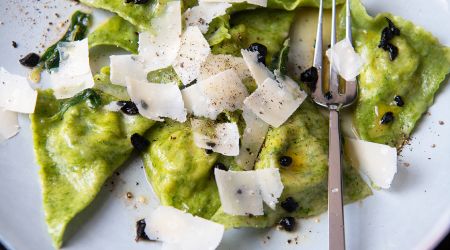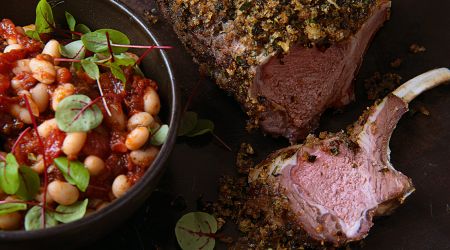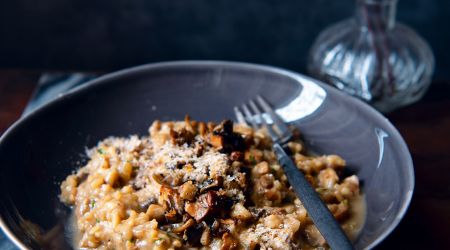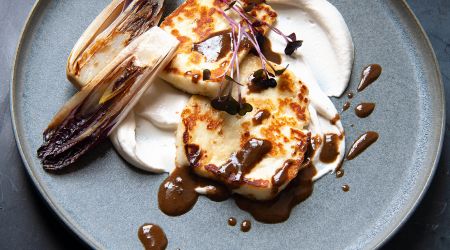Black Garlic
A staple of Asian cuisine for centuries, black garlic – the fermented lovechild of the bulbous original – is now becoming a regular in the shopping baskets of Britain’s discerning food lovers. Clarissa Hyman explains why
What is it?
Black garlic is simply fermented garlic. Made by slowly baking whole heads of fresh white garlic until the cloves turn dark mahogany to black, they are as squidgy and sticky as dried apricots, and are so jelly-soft that they can be spread with a knife. The process can take up to a month, with the browning attributed to the Maillard reaction – a chemical reaction between sugars and amino acids responsible for the deep taste of seared meat and fried onions, rather than high-temperature caramelisation. After fermentation, the garlic is aged, allowing the sweet flavour to become richer. At the end of the process it will have changed colour, texture and taste as compared to regular garlic.
The origins
This ancient, esoteric speciality is believed to have originated in Korea. It was only recognised in the West around a decade ago, as an exciting addition to the pantry after consumers had overcome an initial reluctance to use the Dracula-like ingredient that looks like good garlic gone bad. Koreans, of course, think this all highly amusing. China also makes a claim, and some say black garlic was noted in the sixth-century Tao Te Ching text.
Traditionally it is made in clay pots in the hot sun, with high temperatures maintained for a long period of time changing the garlic from creamy white and odiferous to black and sweet. Artisan black garlic made this way or according to these principles is very different to that made with automated commercial equipment. Black garlic from different producers will have significantly different flavour profiles dependent upon all the variables of the fermentation and ageing processes.
Tasting notes
Although you might think the blackness would only intensify the character of garlic, in fact there’s only a faint taste of the latter and no hint of rawness as the flavour is softened so much so it almost or entirely disappears. There are instead intriguing overtones of balsamic, tamarind and prunes, plus a note of liquorice. A common misconception, linked to the concentrated harshness of raw garlic, is that black garlic is likely to be ‘meaty’, but in fact it has a lovely treacly, caramel flavour which gives added depth to dishes.
The flavour, varies somewhat depending on the variety and quality of the fresh garlic originally used to make it, as well as the season in which it is harvested. If the sugar content is high, it produces a milder, more caramel-like flavour; if low, it results in a sharper, more acidic flavour that has been compared in texture and character to tomato paste.
Although the process to make it sounds relatively straightforward, it requires a great deal of skill and experience. Heating the garlic for too long or at too high a temperature can produce a burnt flavour or turn the cloves black before the full extent of the sweetness has been able to develop.
Any benefits?
The process of making black garlic does not include additives, preservatives or burning of any kind and the sharpness of fresh garlic is broken down by the action of natural enzymes. The chemical reaction renders high levels of S-allyl cysteine, an active component said to lower cholesterol and improve heart health. The oxygen radical absorption capacity (ORAC) is approximately twice that of fresh cloves of garlic.
Goes well with...
It enhances flavours without making a dish taste ‘garlicky’, so use in mushroom or squash soups, in salsa verde to serve with lamb or tossed into a vegetable dish such as quinoa bean chilli. Add to aubergines for earthy sweetness, or slice onto scrambled egg for a luxurious ‘truffly’ breakfast. Black garlic cuts through any fattiness in meat but bear in mind, it has a subtle, muted flavour that is easily overpowered. While you shouldn’t use in place of white garlic, it can be used alongside.
Quick tips
There is no need to cook black garlic so, if you wish, you can eat it alone or smear it on bread with or without oil: the chewy, sweetish flavour is both potent and funky.
Enthusiasts sometimes describe it as a ‘savoury, slightly acidic, caramel candy’. It makes a great partner to cheese, especially salty feta or creamy blue – try it instead of sweet onion chutney – or else make an indulgent snack of cheese on toast with black garlic.
Rub it onto chicken or fish before roasting. Or you can make a speedy vinaigrette with mashed black garlic, sherry vinegar, soy, Dijon mustard and rapeseed oil. Salmon with a black garlic glaze made with soy sauce, lemon, ginger and brown sugar is also deliciously quick and easy. Mash into aïoli or mayonnaise, add to marinades, stir-fry sauces or a pasta salad, or adopt an Ottolenghi idea to whip some into yoghurt with lemon juice and cumin to serve with aubergines. One unusual pick is to crush a clove and mix with some maple syrup as a topping for vanilla ice cream.
You can also release the subtle flavours by mashing a peeled clove and dissolving the resulting paste into a little hot water. This produces a dark-brown solution that gives an intriguing, umami dimension to neutral foods like mashed potatoes.
How to showcase it
Because it’s like garlic, but better, chefs like Peter Gordon serve it in a dish of roast chicken, kumquats, kale and avocado; Daniel Britten has created a splendid dish of roasted partridge, Sussex squash, black garlic sauce and Wiltshire truffle using The Original Black Garlic, aged in Bedfordshire; Steve Drake enlivens grey mullet with pearl barley pudding, black garlic and spring onion; and Anna Hansen, when at The Modern Pantry, served Alaska salmon crusted with black garlic, liquorice and macadamia.
Anything else?
Black garlic keeps for around 12 months if stored in a cool, dark place and consumed by the date recommended. Paste should be kept chilled once opened and used by the date shown on the jar.
And, worry not, unlike regular garlic, it won’t scare off vampires or anyone else.
This article was taken from the April 2020 issue of Food and Travel.
To subscribe today, click here.
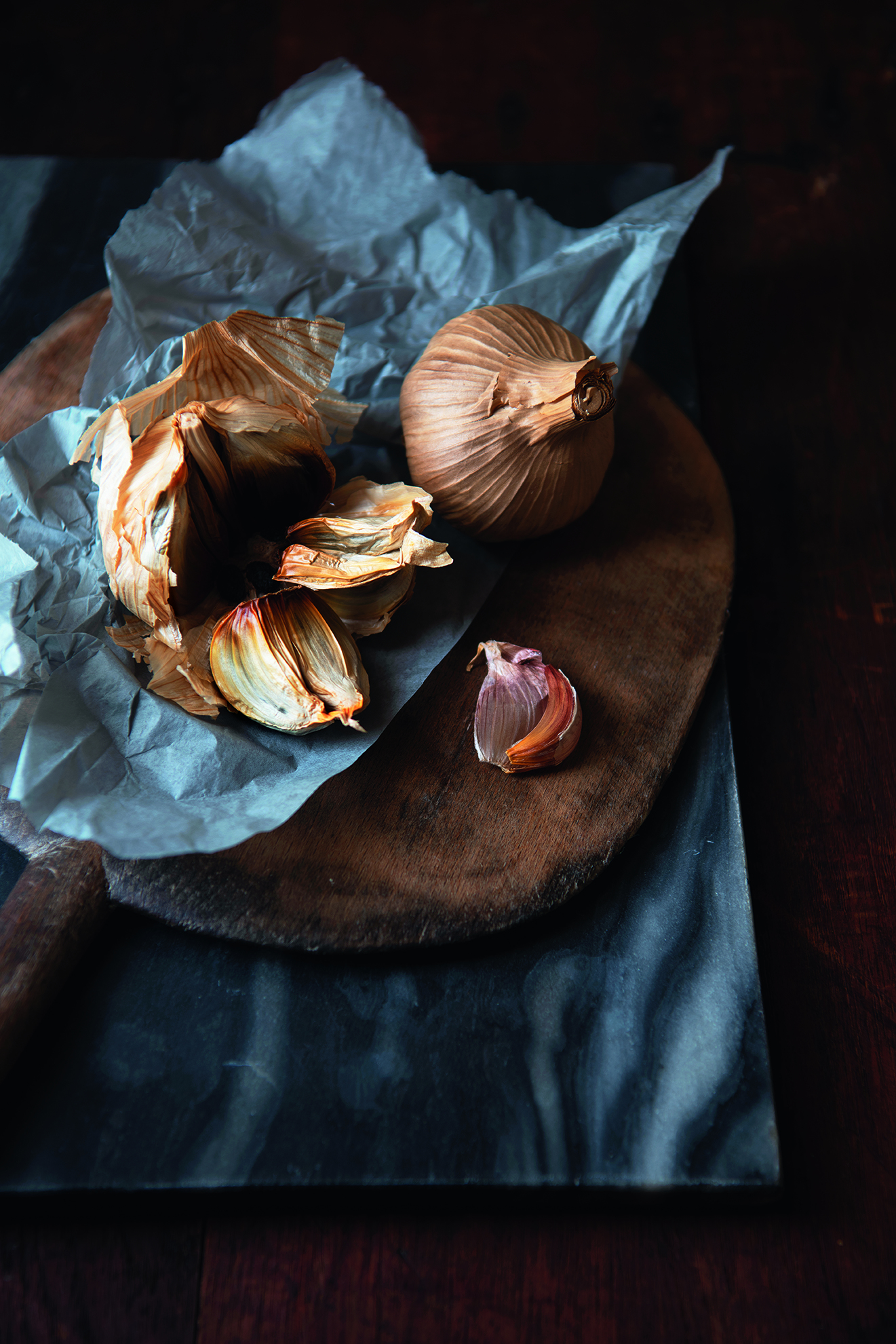
Recipes
Get Premium access to all the latest content online
Subscribe and view full print editions online... Subscribe

